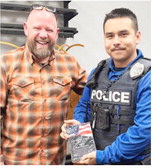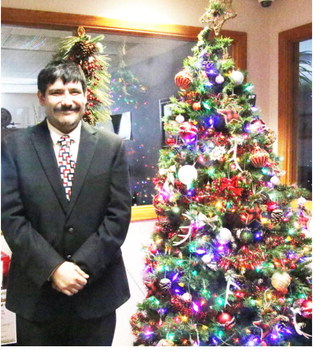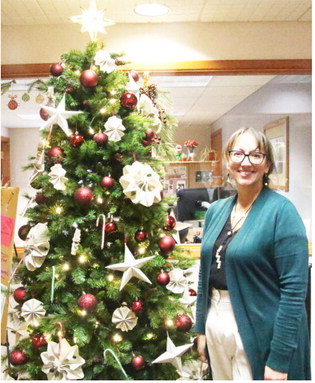Eastern Montana Catholic Group Investigates Indian Boarding Schools
A Catholic-run Indian boarding-school group in southeastern Montana has commissioned an investigation into student deaths and unmarked graves at its three schools during their century-plus history. The three schools are St. Labre Indian School, a pre-K through 12th-grade school in Ashland, just beside the Northern Cheyenne Indian Reservation; Pretty Eagle Catholic Academy (previously called St. Xavier Mission School), a pre-K through 8thgrade school in St. Xavier, on the Crow Reservation; and St. Charles Mission School in Pryor, also on the Crow Reservation.
The schools, founded in the 1880s and 1890s, were among nine run by the Catholic Church in Montana and were staffed by various religious orders, including the Jesuits and the Ursulines. The three still serve as elementary, middle, and high schools for Crow and Cheyenne students. A private Catholic group, the St. Labre Indian School Educational Association, took over their operations in 1985.
The St. Labre school board was inspired to start its investigation after a First Nations tribe in British Columbia announced its discovery of more than 200 unmarked graves on a former Indian residential school property in 2021. That brought the scandal of Indian boarding school history into prominence in the mainstream media. It also set off a chain of similar investigations in the United States, including one by the federal government, which is responsible for funding and operating the schools.
In late 2022, the St. Labre school board appointed a five-member commission to investigate how many students died at its three schools and find out where they were buried.
“The thing that we do not have at Labre is any evidence of deaths and unmarked graves,” said commission chair Dr. Janine Pease (Crow), founder and president of Little Big Horn College on the Crow Reservation and an experienced researcher of federal Indian boarding schools. But that doesn’t mean there weren’t any deaths, she said: Census documents from the Cheyenne and Crow from 1890 to 1910 show that half of the total population of children died.
“The death rate was documented, but not the specific deaths,” Dr. Pease told Native News Online.
Her grandfather’s younger brother Benny’s body was sent home from a federal Indian boarding school on the Crow Reservation without any explanation of his death. Pease has pored over federal documents from that time period without finding any record of his death.
“What is in our family is: He died of being beaten or of meningitis. Those are the two things that have been discussed in our family all these years,” she said. “There’s no record of his death; we have to speculate.”
The commission’s four other members are Dr. Matthew Redinger, the only non-Native, provost of the University of Providence in Great Falls; Dr. Walter Fleming (Kickapoo Tribe of Kansas), who grew up on the Northern Cheyenne Indian Reservation and heads the Native American Studies department at Montana State University in Bozeman; Dr. Richard Littlebear (Northern Cheyenne), the retired president of Chief Dull Knife College (a tribal college in Lame Deer) and a fluent Cheyenne speaker; and Anda Pretty on Top (Crow), a retired local teacher and fluent Crow speaker. The school board calls the commission independent, though two of its members — Redinger and Pretty on Top — serve on the St. Labre board of directors.
The commission’s work will have three parts, Dr. Pease said. First, it hired a research company, Historical Research Associates in Missoula, to review government, private, and religious documents held at various sites throughout the United States. A leading historian with the firm, James Grant (Little Shell Chippewa Tribe), is expected to complete his research this fall.
Second, it will host seven local listening sessions to document oral histories from former students at the three St. Labre schools and their descendants. The commission is asking that only those with information to share attend those sessions, which are scheduled for July 10-12.
“We’re inviting people locally to come,” Pease said. “Our interest is in that very narrow area: Do you know of any deaths or unmarked graves? I can’t speculate, but I know but from my own family’s memory and the death of little Benny, I expect there will be memories.”
The listening sessions will be held in three communities on the Northern Cheyenne Reservation and four on the Crow Reservation.
Finally, the commission will combine the oral histories with archival research in a report for the St. Labre board of directors, to be completed by early 2024, Pease said. She added that while it’s up to the directors to decide what to do with the report, the commission also plans to copy all archival materials to be housed at a central location at the St. Labre schools. They are also prepared to use ground-penetrating radar or cadaver-search dogs if they uncover information indicating a possible unmarked gravesite.
“One of the key parts of our investigation is that we are members of our communities,” Pease said. “We’re not going to be a hit-and-run outfit, we’re right here, right now. And once we’re done with the report, we’ll still be right here.”
Tribal members with questions for the commission can contact Pease at peasej@lbhc.edu, or by phone at 406208-4549.


